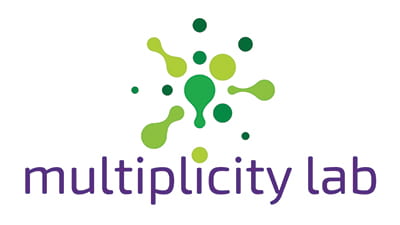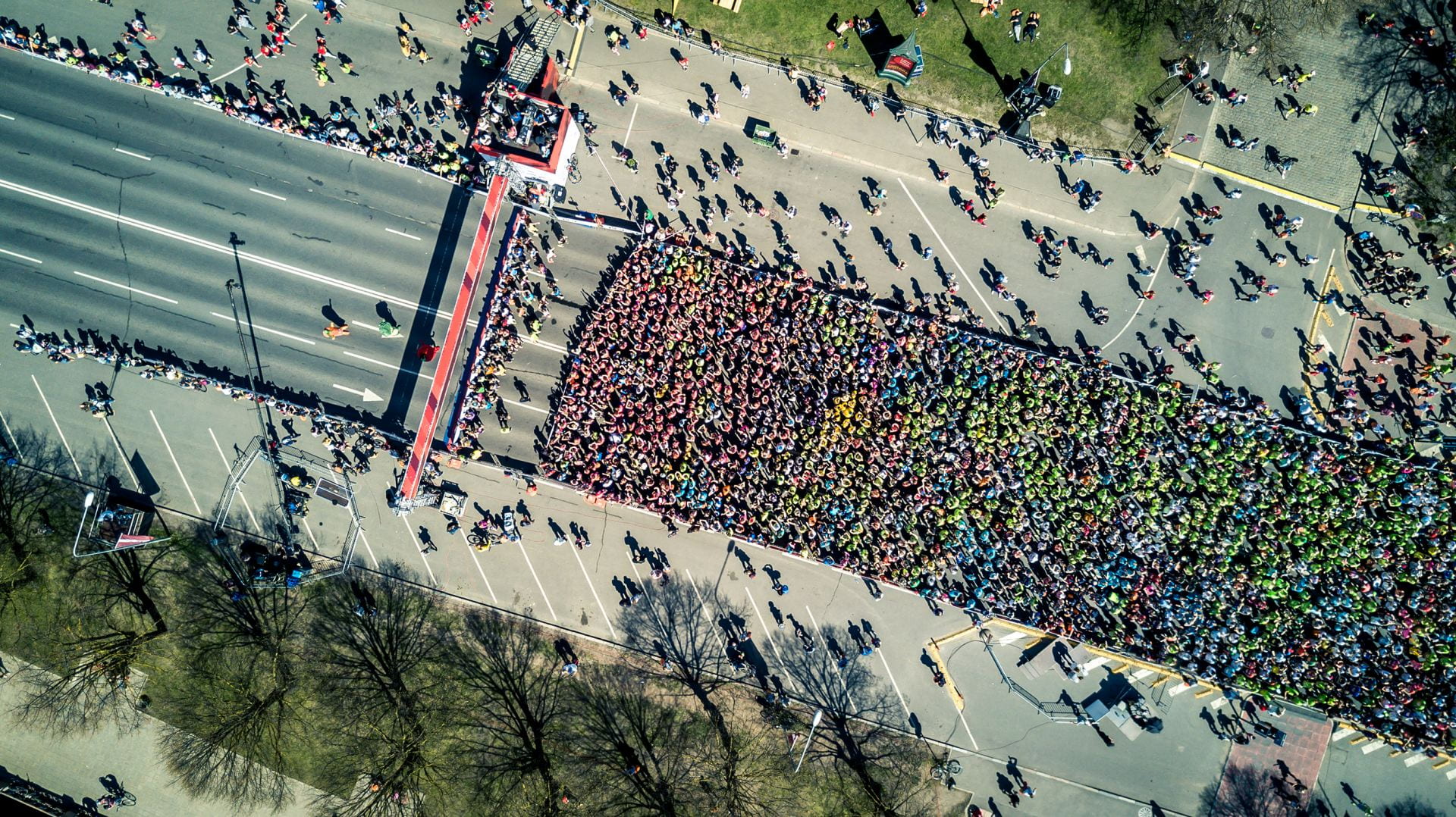Image of the Week: Estimating Quantity vs. Estimating Area
February 6, 2022Estimating Quantity vs. Estimating Area
Have a look at this week’s image, an aerial view of a crowd just before the beginning of a marathon: About how many people do you see? One of the first things you might notice is that the people are not distributed evenly across the image. In one section of the road just before the starting line, they are densely packed in a rectangle. While beyond the starting line, there are very few people. On the sidelines, there are many people, but they are spread out much more widely than the runners. Then, of course, there are sections of the image with no people all.
In some situations, we might use area as a way to estimate quantity. For example, if we asked you how many bricks were used to build a wall, you might count a section and think about how many of those regions made up the whole wall. In that case, the bricks will be evenly distributed, with even density across the area. So, area can be used to estimate quantity. But in the case of our marathon, a different strategy is required. If you counted a square of the runners and multiplied it across the whole image, you would vastly over-estimate the number of people in the picture. On the other hand, if you counted a section of the observers and did the same, you’d vastly under-estimate the number of people.
By asking, About how many people do you see? you open up big mathematical ideas about area, quantity, iterating and sampling, and density. And students may develop complex estimation strategies to cope with to complexities of the image. For instance, they might partition the image into regions of similar density, estimate each one, and then combine. They could estimate what percentage of people are runners or observers, then use their estimates of one of these populations to estimate the total. Provide your students with a copy of the pdf image of this activity so they can decompose, test ideas, count, and develop strategies to cope with the difference between estimating quantity and estimating area.
And we invite you to follow us on Twitter! Tweet us the fascinating ideas you students have about our activities or how you’re trying these activities in your space. We can’t wait to hear from you!
To multiplicity, cheers!
Jen Munson and the multiplicity lab group
Read the Archive
Get the Image of the Week
Each week we bring you a new image and activity you can do with your students tomorrow, and we spotlight a feature of the mathematical work that we think is important for students’ learning and your teaching.
Stay connected and see what's new.

